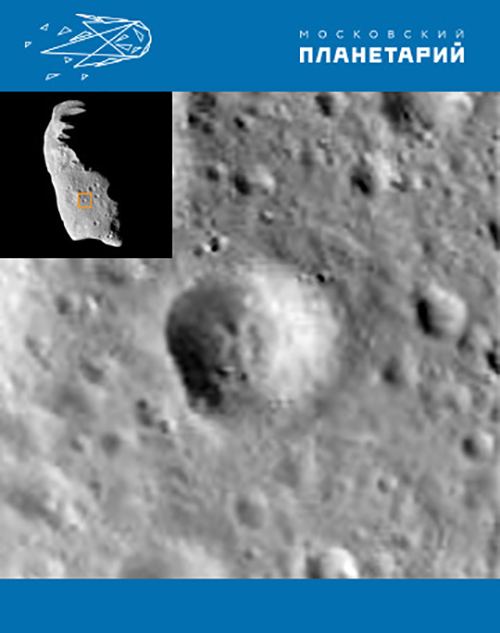Moscow Planetarium logo.
May 16, 2021
Until recently, there was a strong belief that satellites can only have large space objects - planets or dwarf planets. The possibility of the existence of a satellite around the asteroid was considered only theoretically. In 1993, the Galileo spacecraft, heading towards Jupiter, while flying past the asteroid Ida, discovered a satellite 1.4 km in size near it. This was the first time a satellite was detected near a space object of such a small size - 60 × 25 × 19 km.
Idu was discovered in 1884 by the Austrian astronomer Johann Palisa at the Vienna Observatory. The object was named in honor of a nymph from ancient Greek mythology. Discovered one hundred and nine years later, the satellite was named Dactyl in honor of the mythical creatures - dactyls that lived on the island of Crete on Mount Ida.
The first spectrographic observations of Ida from Earth made it possible to assert that this asteroid belongs to the spectral class S. But the exact mineralogical composition of asteroids of this class was unknown and approximately correlated with two classes of meteorites falling to Earth: ordinary chondrites and pallasites. After the Galileo flight, the average density of Ida was determined - 3.2 g / cm³, which excludes the presence on its surface of a large amount of substances with a high content of iron and nickel. The low density of the asteroid and the discovery of the processes of cosmic weathering on its surface led to some revision of the relationship between class S asteroids and ordinary chondrites. Previously, it was believed that the main source of ordinary chondrites were asteroids of the class S. But, according to the data obtained from the Galileo spacecraft, their spectra often do not coincide.
Thus, there are good reasons to believe that only some asteroids of this class, including those in the Koronid family, can be the source of ordinary chondrites.
Related articles:
Asteroid Sylvia and its moons
https://orbiterchspacenews.blogspot.com/2021/05/asteroid-sylvia-and-its-moons.html
Quasi-satellite of the Earth - The asteroid Kamoalev
https://orbiterchspacenews.blogspot.com/2021/05/quasi-satellite-of-earth-asteroid.html
Asteroid Gaspra
https://orbiterchspacenews.blogspot.com/2021/05/asteroid-gaspra.html
Related links:
ROSCOSMOS Press Release: https://www.roscosmos.ru/31061/
Moscow Planetarium: https://www.roscosmos.ru/tag/moskovskiy-planetariy/
Asteroid: https://www.roscosmos.ru/tag/asteroid/
Images, Text, Credits: ROSCOSMOS/Moscow Planetarium/Orbiter.ch Aerospace/Roland Berga.
Best regards, Orbiter.ch




